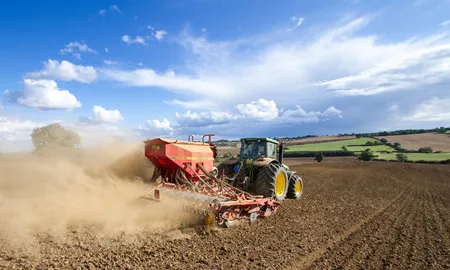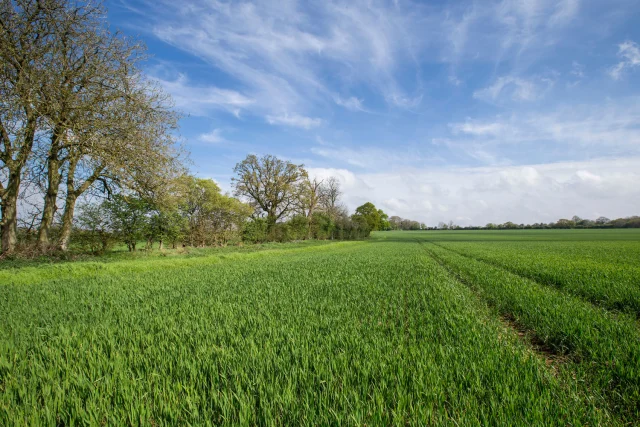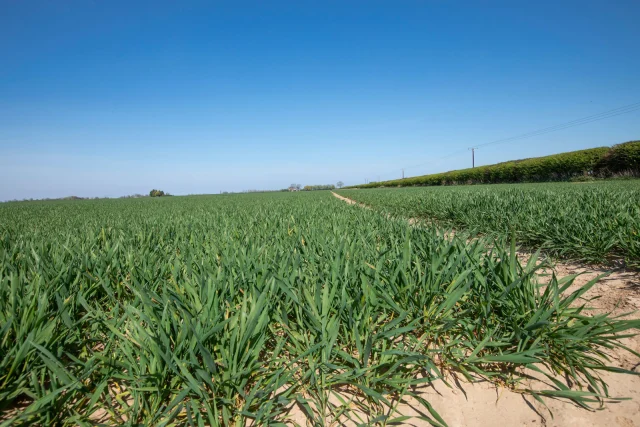Published on 25th September 2020
Local Insights
Four pieces of agronomy advice to help you this October in North England

James Howat assesses the success of oilseed rape crops and provides some advice on how to manage early cereal crops this October
Four pieces of agronomy advice to help you this October in North England Content
Crop Progress
There has been the full set of drilling dates for oilseed rape from 1 August through to mid-September in Yorkshire. Early drilled crops are 8-10 true leaves, with some big leafy plants that are potentially going to need some management from growth regulators. Moisture in the seedbed has been massive, and it will be interesting to see the influence from companion cropping on establishment too.
These early drilled crops are now big enough to survive all but a cataclysmic influx of adult cabbage stem flea beetles, but will need watching for larvae.
The later drilled crops are much smaller and more at risk from CSFB adults. Of these, perhaps 50-60% have suffered some shot-holing damage, but I’ve only heard of the odd field being written off at this stage (end of September), which is good news. Fields drilled after the August bank holiday are those most at risk of being written off.
Judging by the level of interest in the Dekalb Establishment Scheme guarantee, I think growers appreciated the scheme, which pays £100/bag if the crop is written off before the end of October.
Around 20-25% of wheat crops have been drilled in Yorkshire as we approach the end of September. But now major rain has arrived, it will be all hands to the pump when conditions allow.
James’ agronomy tips for October
1. Use disease resistance ratings to help decide on disease control in OSR
As we move into autumnal weather patterns and there are more rain events the risk of Phoma increases exponentially, it is important to keep control especially in the later drilled crops where the leaves are smaller and the disease has less distance to travel to the growing points and the stem of the plant.
Variety choice helps here – if you’ve picked a variety with a good resistance rating to Phoma that should also reduce risk, delay infection and thresholds being met, and help a single spray coincide for both Phoma and light leaf spot in the autumn.
Choosing a product such as Proline (prothioconazole) covers both diseases and should be applied at 0.46 L/ha for a single spray.
2. Follow best practice for stubble management pre-drilling
For those fields still to be drilled, finish off your stubble management following best practice advice. If you’ve already applied a first Roundup (glyphosate) then take out any survivors with cultivation, before a second spray just before drilling.
Ideally spray grassweeds at two- to three-leaf stage with 540g/ha of Roundup – if you have larger weeds then the rate should increase to 720g/ha, and follow all the best application advice to maximise efficacy.
3. Consider new actives in your grassweed control programme
With the change in the eather at the end of September I think most growers will be keen to drill as soon as possible now, and, while it might not be best practice from a grassweed control point of view, even the worst black-grass land is likely to be drilled by the middle of October, weather-permitting.
That might have implications for grassweed control this season and put even more emphasis on pre-emergence herbicides.
In wheat we have the option of adding 1.4 L/ha of Proclus (aclonifen) to 0.6 L/ha Liberator (flufenacet + diflufenican) for black-grass control. It’s pre-emergence only, and in trials has shown an uplift of 10-15% control on black-grass and 10% better control of rye-grass and bromes. It also provides extra control of chickweed and volunteer oilseed rape.
As with pre-drilling applications of glyphosate, concentrating on the basics – getting the application techniques right and making sure seedbeds are fine, firm and consolidated and seed drilled to the correct depth will help with efficacy.
There are also two new co-formulations, which add metribuzin to the actives in Liberator. This is a really flexible option as you can use it both pre- and post-emergence in wheat and barley. If you haven’t got black-grass it is a brilliant product for annual meadowgrass and broadleaved weeds, with a wider spectrum including groundsel, poppies and cranesbill.
But it is also good on black-grass offering 5-10% improvement over Liberator alone, and can be used in several different ways, including in tank mix with Liberator at pre-emergence, as a top-up at peri-emergence or as a partner to Atlantis (mesosulfuron + iodosulfuron) before the end of November.
4. Earlier drilling could increase risk from BYDV
Mid-September alerts from aphid monitoring by Rothamsted Research highlighted a 208% increase in total numbers of aphids from the previous alert, with much of that increase attributed to bird-cherry aphids, which is one of the main vectors of barley yellow dwarf virus.
While BYDV is not always a problem in the north, it will pay to use these alerts and tools like the AHDB T-Sum calculator to have a strategy and plan for how to reduce the risk from BYDV in your crops, especially any drilled earlier.



